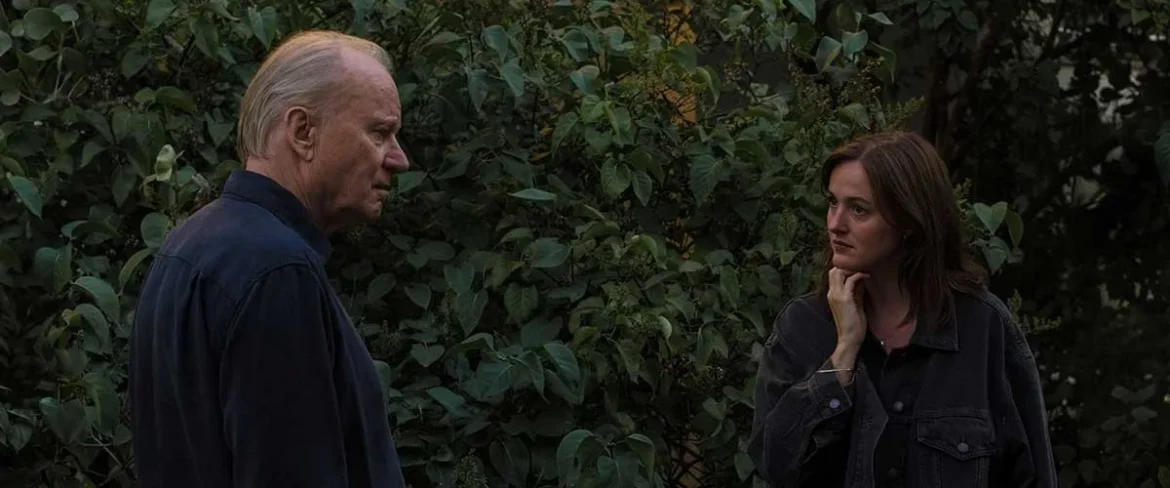Joachim Trier’s Sentimental Value is a beautifully crafted exploration of family, memory, and the fragile artistry that binds generations. It is one of the best films of this decade, if not ever.
What felt immediately striking about this film, as one of my first impressions at its premiere at the New York Film Festival, was its seamless integration of thematic depth with formal precision. From the first frames, the house in Nora’s childhood essay becomes more than a setting—it’s a character, a basket of loss and longing. Joachim Trier, with co-writer Eskil Vogt, builds a narrative architecture that is patient yet insistent, probing how unspoken history can both imprison and define, just like the house the story is confined to.
This is one of the most immediately rich veins the film examines: how memory is embedded in place. Rather than remaining merely a backdrop, the house carries the emotional history of childhood, parental conflict, and intergenerational trauma. Trier stages moments where characters literally revisit the rooms of their youth, where architecture and objects (vases, windows, grates) are loaded with affect. Agnes as a historian, Nora as an actress, Rachel as the outsider—all three inhabit different relationships to truth, performance, and legacy. Art becomes both remedy and wound. Gustav’s desire to make a “comeback” film—casting his daughter, invoking his mother’s story—raises questions about authorship: whose story is being told, and at what cost? The film doesn’t resolve these neatly, but that’s its strength: it acknowledges that reconciliation is partial, messy, sometimes incomplete.
What makes the character interplay especially powerful is how Trier avoids melodrama. Emotional breakthroughs are earned rather than scripted, through what is remembered, what is omitted, and what is lingered on. A great example is a scene at Agnes’s son’s birthday: Gustav’s offhand comment is delivered with familial intimacy yet cuts with the force of long-buried disappointment. It’s these small, carefully modulated wounds that accumulate, shaping the daughters’ relationship with their father and with each other. All of these moments are delivered through heart-stopping performances by the stellar cast, leaving little to be desired.
Renate Reinsve gives perhaps her most finely solidified work to date as Nora. She balances public performance (on stage, in front of others) and internal collapse with a precision that never feels showy. The stage fright scenes, the moment of breakdown before opening night, were my personal favorite; they are harrowingly honest, each gesture modest but weighty, and a great way to begin the film. Inga Ibsdotter Lilleaas, as Agnes, offers a foil neither in competition nor in judgment but in quiet tension; her more contained character allows for subtler emotional edges, especially when memory and responsibility collide. Stellan Skarsgård’s Gustav embodies both creative grandiosity and wounded patriarch: he is both the object of resentment and love, whose return doesn’t simplify—but complicates—the emotional terrain. Elle Fanning, as Rachel Kemp, brings in a dimension of external pressure, the outside gaze, which amplifies the stakes without tipping into caricature. Her character, especially, is intriguing—her role in the film mirrors her position as an actress with the cast itself, both unfamiliar strangers and both seeking a way to fit into the established family and story through struggle. Her character is handled beautifully, and does not succumb to the dumb and comic-relief syndrome that “Hollywood-actor” characters usually evoke.
As a bit of a cinematography nerd, I couldn’t help but marvel at the decision to shoot primarily on 35mm Kodak stock, supplemented by 16mm for historical flashbacks. This is significant since the cinematographer, Kasper Tuxen, tells a story through the actual tech used, and provides a texture that reinforces the film’s concern with time, with what lingers. According to interviews, the film uses Kodak VISION3 250D, 500T, and even 50D for daylight exteriors, plus vintage lenses in flashbacks (Cooke Varotal, Super Baltars), all helping to delineate eras and emotional registers. Visually, the Oslo house—memory-laden and haunted—is shot both as refuge and battleground. Interiors are suffused with natural daylight bleeding through windows, capturing dust motes, skin tones, blushes, red eyes—all of the bodily traces of grief. Exterior scenes, such as the set on the beach at dusk, are grand but intimate: the lighting is generous without being showy, allowing human gestures to emerge against a wide sky and sea without losing scale. The editing of the film (by Olivier Bugge Coutté) supports this visual sensitivity. The pacing allows silences to exist uncomfortably; cut to black moments interrupt the rhythm in ways that feel intentional and jarring, as if inviting shock from the viewer. These pauses grant space for reflection—or simply for the weight of what isn’t being said. The film’s structure, with its flashbacks, chapters, and the film-within-a-film device, is all handled so that thematic echoes multiply rather than distract.
What makes Sentimental Value one of Trier’s best, and one of this year’s most memorable films, is its synthesis: penning a story that is richly layered (family, memory, art, trauma) while still grounding it in small moments. By the time the credits rolled, I felt as if I’d witnessed not a neatly resolved reconciliation but a fragile offering of possibility. It’s a film that will stay with me—not because it gives answers, but because it asks not to forget. It’s a slice of life, a glimpse of a peek through a window at characters that I’m convinced will continue to exist and live after the movie is complete.
In sum, I believe Sentimental Value is a major artistic achievement: emotionally rigorous, formally sophisticated, visually lush, and deeply humane. A story initially small in scope that felt like it had been expanded and inflated and pulled a thousand ways, it confirms Trier as among the most thoughtful filmmakers working today, able to draw out performances, craft atmosphere, and pose questions that linger.
If you value films that take time, that allow sorrow and laughter to coexist, that are haunted but not defeated, this is one to savor.
